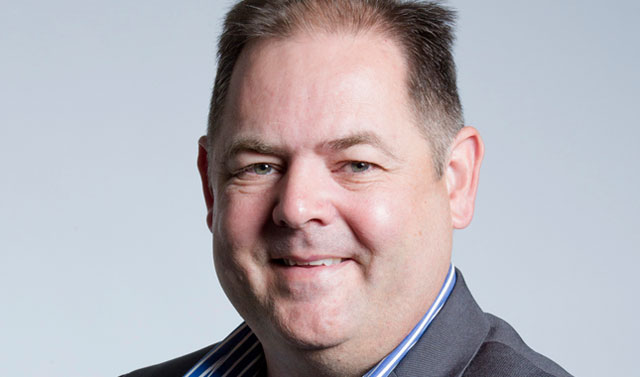
Cell C warned earlier this week that communications regulator Icasa’s proposed spectrum auction would serve only to entrench the dominance of South Africa’s two largest mobile operators, Vodacom and MTN. But does this claim stand up to scrutiny?
Cell C’s chief legal officer, Graham Mackinnon, claimed that Icasa’s invitation to apply (ITA) to participate in an auction to bid for spectrum in the 700MHz, 800MHz and 2,6GHz bands is skewed in favour of the country’s two big incumbents and disfavours smaller players.
“The ITA contemplates two very attractive spectrum lots relative to other lots that, on an auction, would go to the bidders with the deepest pockets. This would favour and further entrench the current Vodacom/MTN duopoly,” Mackinnon said on Tuesday.
To ascertain whether Cell C’s claim stands up to scrutiny, TechCentral asked spectrum expert Tim Parle — who is senior telecommunications consultant at BMI-TechKnowledge — for his view.
For the planned auction, Icasa has reserved five lots of spectrum. The first, Lot A, is for later allocation, with a further four lots — B, C, D and E — to be auctioned off in January 2017.
Parle explained that Lots B, C and D have the same total spectrum, at 60MHz each, while Lot E has only 40MHz.
Lot A is off the table for the time being, possibly being reserved for some future wireless open-access network — the merits of which are “debatable”, Parle said.
“Lot C and D are very similar with their allocations in the 800MHz and 2,6GHz bands, and none in the 700MHz band,” he said.
“Lot B’s sub-1GHz spectrum is split across the 700MHz and 800MHz bands with the narrowest allocations in the process at only 5+5MHz of paired spectrum in each band,” Parle continued. “This has bearing on the channel bandwidths used and operators may find these to be too narrow and restrictive to offer high-speed services…”
Parle explained that operators prefer “contiguous bandwidth” — speed decreases with less contiguous bandwidth, although techniques such as “carrier aggregation” pool different information streams to offset this somewhat.
“This splitting does make life for the operator in Lot B somewhat more challenging than for those with Lot C and Lot D,” he said.
“There are several differences. For example, the operator would have to use multiband antennas and dual radios to operate in both bands. [However, the] use of multiband antennas is becoming commonplace as tower space gets increasingly limited.
“The operator may choose to deploy 700MHz in one area, and 800MHz in others, and both only in selected areas as demand grows (and technology advances).
“There may be a minor premium in terms of the mechanical issues (weight and size, surface area/wind loading) to accommodate another, lower frequency band in the unit,” he said.
“There are other knock-on effects, too. For example, the operator would also have to have a slightly higher spares inventory with incremental logistics costs.”
On the positive side, however, Lot B has the lowest frequencies in the 800MHz range, lowest in the 2,6GHz range and second lowest in the 700MHz range.
“Lower frequency spectrum propagates further, so arguably Lot B is marginally more advantageous to the operator: more customers can be served, with lower capital and operating costs,” Parle said.
This is, however, only in theory, and reality will be that there will be advantages in some areas and disadvantages in others.”
Then there’s Lot E, which Parle said has the “benefit of a mid-sized allocation (10MHz+10MHz) at 700MHz”, but which has the drawback of having the smallest allocation in the 2,6GHz band with half the bandwidth at only 10MHz+10MHz.
“This could be used to complement the existing spectrum holdings of any of our mobile network operators, but with some limitations in terms of the services that they will be able to offer.”

Parle said operators having spectrum assets in both the 700MHz and 800MHz bands is not unusual.
“Orange in France and Vodafone in Germany are two good examples. Given the emerging market in Europe and elsewhere, it can be taken for granted that equipment vendors (base stations and handsets/devices) will be working on multiband devices covering the 700MHz, 800MHz, 900MHz, 1,8GHz, 2,6GHz and other bands to be ready for market towards the end of the decade. It remains to be seen how big the premium will be, if any, to support two or three sub-1GHz frequencies in a single device.”
In conclusion, Parle said Lots B, C and D each provide 60MHz of sub-1GHz and 2,6GHz spectrum, while Lot E only provides 40MHz. “One can argue that, on the basis of simplicity, with their contiguous spectrum, Lot C and Lot D tie for first place.
“Lot B could be seen as being less desirable as its sub-1GHz spectrum is split across two bands. However, it is far from being a distant third place. Lot E may come fourth, but it still has value.
“As was evident in the auctions in Europe, some operators will pay a premium for where they see the more value — largely as a function of their current spectrum holdings, market share, aspirations and depth of pockets. Overall, Icasa has done a credible job of splitting the available spectrum more or less evenly.” — © 2016 NewsCentral Media

